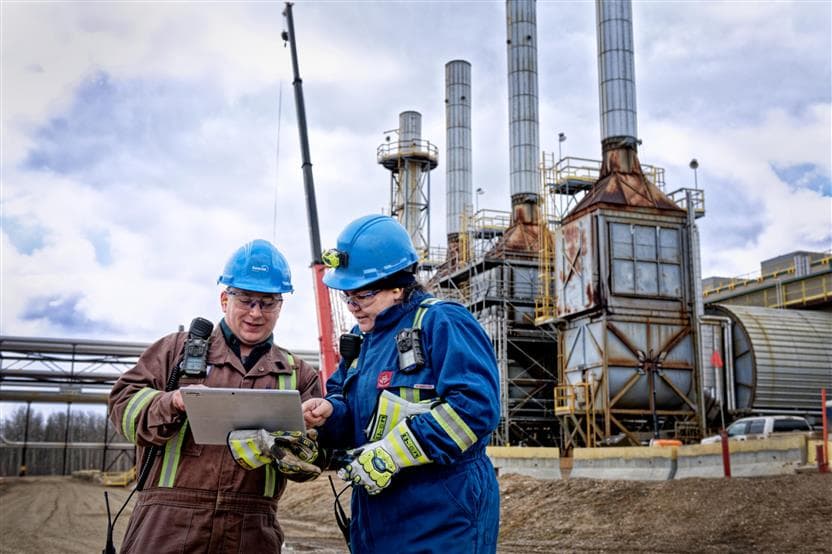We are advancing a portfolio of in situ technologies with the potential to lower the carbon intensity of producing bitumen. Our current investment in commercial pilots of in situ solvent technologies have the potential to lower greenhouse gas (GHG) emissions by 30-60%.
Enhanced Bitumen Recovery Technology (EBRT)
Through a collaboration with Imperial on a 50-50 joint investment pilot, we are advancing a field trial of Enhanced Bitumen Recovery Technology (EBRT). EBRT is an oil sands in situ technology designed to improve environmental and economic performance. The process, developed by Imperial, uses a light hydrocarbon to replace most of the injected steam – as much as 90 per cent compared to current methods.
Based on the research, it is expected the technology could reduce greenhouse gas emissions and intensity from oil sands in situ extraction facilities by approximately 60 per cent compared to conventional steam-assisted gravity drainage (SAGD) production methods.
As the technology operates at low to medium pressures, it may enable recovery from reservoirs not previously considered viable.
The field trial is expected to start up by 2027 on Imperial’s Aspen lease and will test EBRT’s potential to deliver higher bitumen production rates.
Expanding Solvent SAGD ES-SAGD)
The Expanding Solvent SAGD (ES-SAGD) process involves partial replacement of steam with a hydrocarbon solvent.
ES-SAGD was successfully piloted in a half-pad configuration at Firebag from 2019 to 2021 which validated the potential benefits of this technology and successfully de-risked the expected oil rate increase by approximately 30 per cent, a steam-to-oil ratio (SOR) reduction by approximately 20 per cent and reduce GHG emissions intensity by 30 per cent compared to current SAGD operations.
A follow-up full-pad commercial demonstration began at Firebag in 2022 to further evaluate production performance and solvent recovery to de-risk the technology.
Pending a successful demonstration, the technology is expected to be ready for commercial deployment in our in situ projects as early as 2027.
Continuous improvement and industry collaboration
On an ongoing basis we are pursuing various tools and equipment changes and modifications that offer incremental improvements in in situ technologies, safety and reliability and safety.
Through a holistic and continuous improvement approach, we are focusing on small-scale pilots, joint industrial projects (JIPs), lab testing and field trials to evaluate and implement new solutions. These initiatives aim to enhance production systems’ efficiency, reduce energy consumption, and reduce emissions in our base business.
Working along with industry peers and research and development centers, our in-house experts spearhead technological advancements at Suncor, including the creation of proprietary solutions to address operational challenges.
Further, as members of COSIA, the technology arm of Pathways Alliance, we benefit from shared learnings and JIPs with industry peers on a wide range of in situ technologies. The COSIA In Situ Fundamentals Group and Wellbore Group work on initiatives in the areas of down hole instrumentation, well bore troubleshooting, Artificial Lift (electrical submersible pumps and others), data machine learning and digital solutions and well bore integrity preservation.
Each COSIA member brings SAGD improvement ideas and the group chooses the highest value initiatives to progress.



.jpg?mw=304&modified=20221130173317&hash=57C9C7EDE761D075B9902F6ACD52E2C2)

.jpg?mw=304&modified=20220921171014&hash=8FD467694C312EAD1B1CBB6AE8AE9DCB)